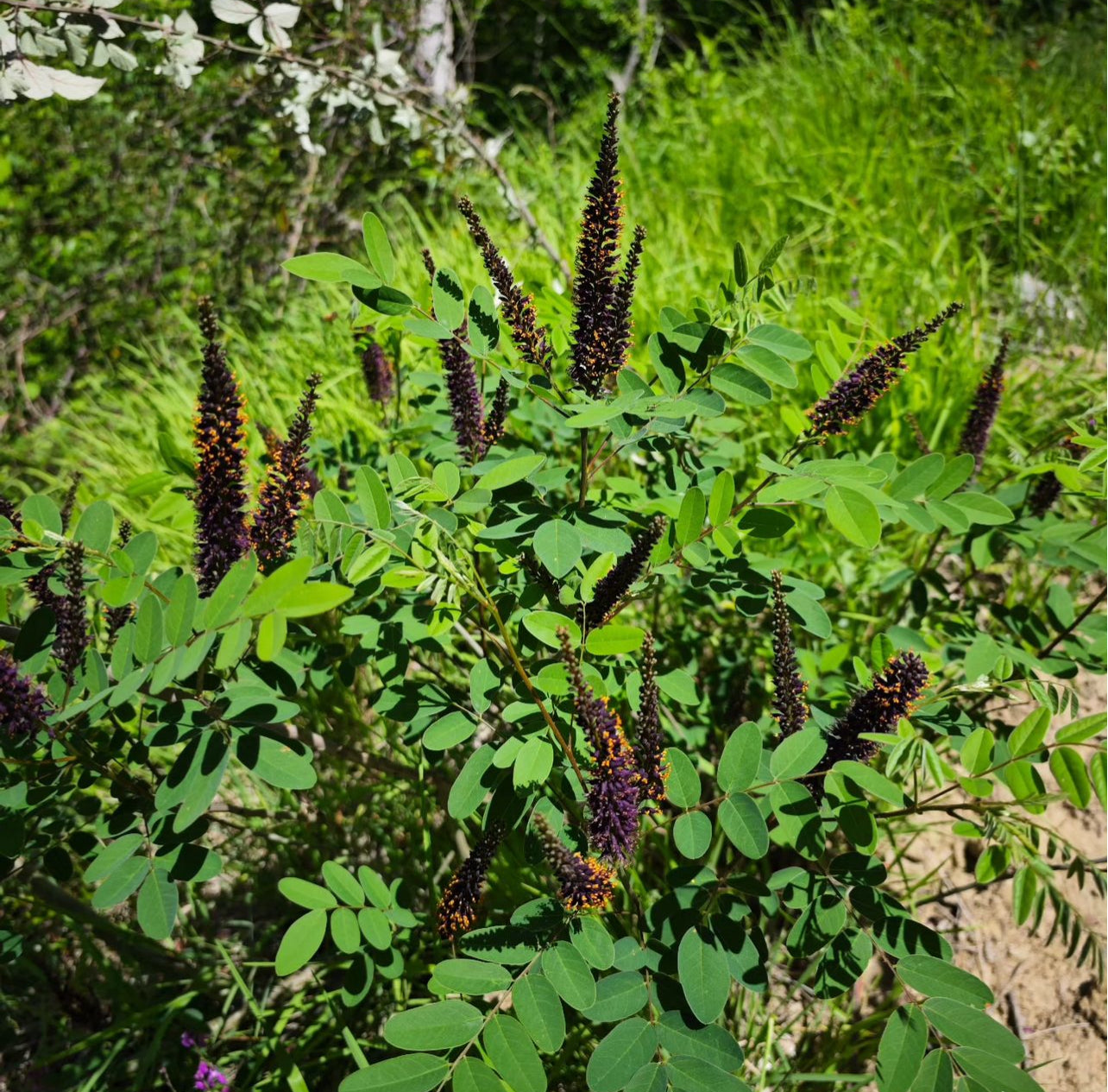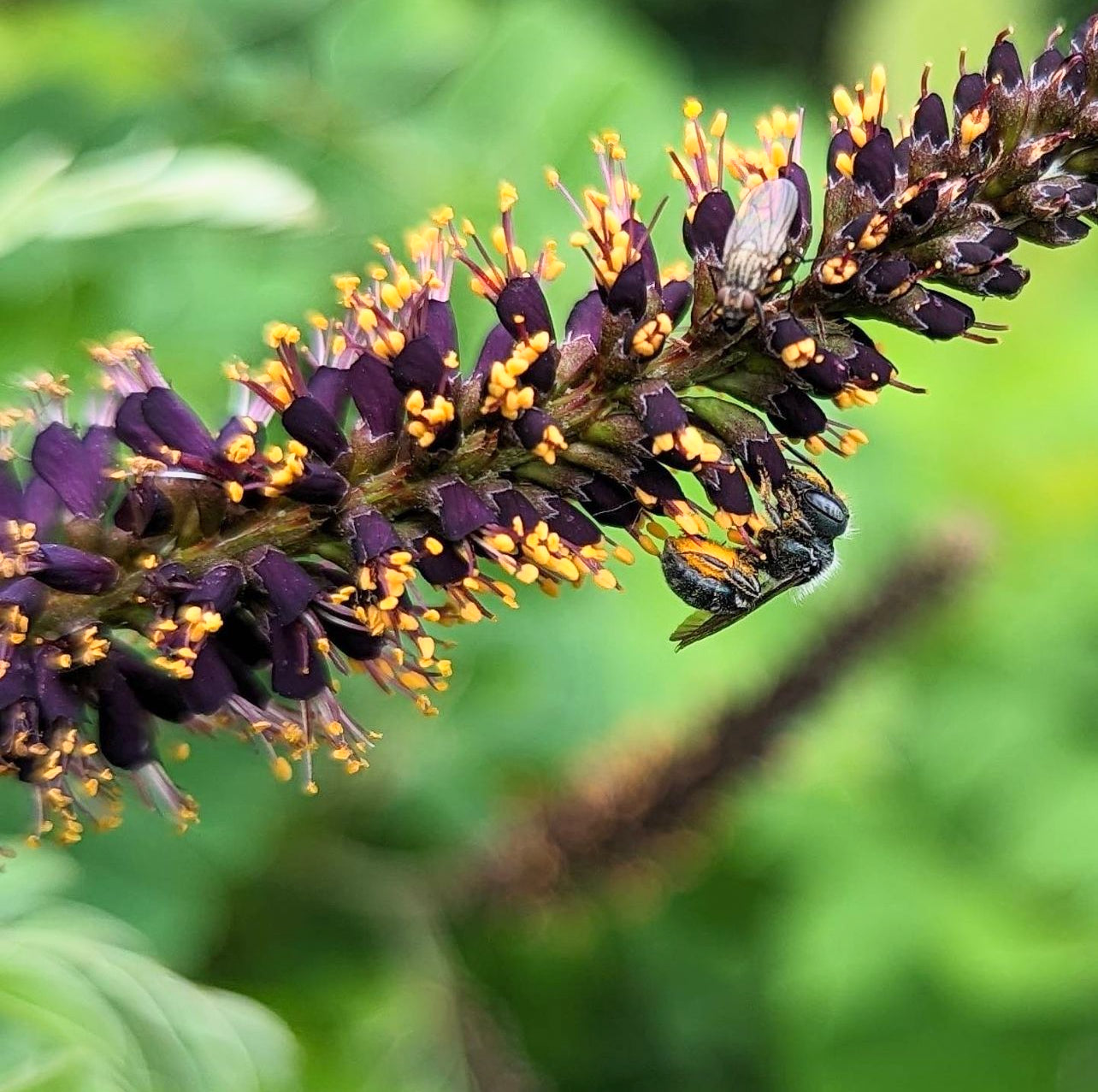River Locust (Amorpha fruticosa)
River Locust (Amorpha fruticosa)
Couldn't load pickup availability
Why We Grow It
Why We Grow It
River Locust is an ideal choice for food forests and ecological restoration projects due to its ability to kickass in any environment. Its nitrogen-fixing abilities improve soil fertility, while its dense root system stabilizes soil and prevents erosion. The shrub provides forage and shelter for pollinators and wildlife, enhancing ecosystem health. Its resilience in poor soils and flood-prone areas makes it a valuable addition to integrated farmsteads and other perennial projects.
How the Plant Grows
How the Plant Grows
River Locust grows as a multi-stemmed, deciduous shrub with a rounded form. It leafs out in spring with pinnate, feathery leaves that provide a lush, green canopy. By late spring to early summer, it produces dense spikes of small, purple flowers that give way to seed pods in the fall. This shrub grows rapidly, establishing itself in difficult soils and spreading through suckers to form dense thickets.
Plant Size
Plant Size
Size at Maturity- Shrub layer. Grows to 6-12 feet tall and 4-8 feet wide.
Current Size- Large 2'-3' 2 year old seedling. These Grew to 8 feet and we had to cut them back to fit in storage.
Additional Info
Additional Info
Native to North America, the River Locust is used in stabilizing riverbanks and preventing erosion. Its eye catching, fragrant purple flowers are a magnet for pollinators, while its ability to fix nitrogen enriches the soil for neighbouring plants. Commonly used in agroforestry and restoration projects, this plant provides habitat for wildlife and serves as a nurse plant for young trees in reforestation efforts.
River Locust (Amorpha fruticosa) is a hardy, fast-growing, nitrogen-fixing shrub native to North America’s riverbanks, floodplains, and prairie edges. Known for its graceful, compound foliage and striking spikes of deep purple flowers with bright orange anthers, this species is highly attractive to bees, butterflies, and beneficial insects. Extremely resilient, River Locust thrives in both moist and dry soils, handles periodic flooding, and tolerates drought once established. Its dense root system stabilizes banks, improves soil fertility, and rapidly builds biomass, making it a powerful species for food forests, shelterbelts, wildlife plantings, and regenerative land-repair systems.
Share


Plant Highlights
-

Water
Prefers moist conditions; tolerates occasional flooding and dry spells once established
-

Pollination
Pollinated by bees and other insects; self-fertile
-

Soil
Thrives in well-drained sandy, loamy, or silty soils; tolerates poor and slightly alkaline soils
-

Years to Bear
Produces flowers and seeds within 2-3 years of planting
-

Hardiness
Zone 4, tolerating temperatures as low as -34°C
-

Solar
Grows in full sun to partial shade, with optimal growth in full sun
Subscribe to our emails
Lots of Free Growing Info. Be the first to know about new plants and exclusive discounts.








